doi: 10.62486/agma202496
ORIGINAL
Analysis of the Organizational Culture of the Companies of the Massive Cargo Transportation Sector in the City of Pasto
Análisis de la Cultura Organizacional de las Empresas del Sector Transporte de Carga Masiva en la Ciudad de Pasto
Camilo
Andrés Narváez1, Claudia Magali Solarte Solarte1
![]() *
*
1Universidad Cesmag, Facultad de Ciencias Administrativas y Contables, Programa de Administración de Empresas. San Juan de Pasto, Colombia.
Cite as: Andrés Narváez C, Solarte Solarte CM. Analysis of the Organizational Culture of the Companies of the Massive Cargo Transportation Sector in the City of Pasto. Management (Montevideo). 2024; 2:96. https://doi.org/10.62486/agma202496
Submitted: 06-12-2023 Revised: 11-03-2024 Accepted: 04-08-2024 Published: 05-08-2024
Corresponding Author: Claudia Magali Solarte Solarte *
ABSTRACT
Introduction: research problem: within which is defined, research topic, which is related to Organizational Culture, is defined line of research focused on management and competitiveness, defining management mechanisms to identify type of organizational culture, hand in hand with competitiveness; the research problem is described and formulated, defined by objectives both general and specific, where the present research is justified and its study is endorsed, followed by the feasibility and the tools available for its execution together with the human capital to develop it, work delimited in the city of San Juan de Pasto during the years 2021 and 2022 in massive cargo companies. Within the referential framework we find the background and knowledge of this research key to carry out its development taking up objectives and conclusions; followed by the contextual framework we relate the macro context within the republic of Colombia where geographical location, population, definition of economic sectors among others are indicated, within the micro context we indicate aspects related to the city of San Juan de Pasto, making analysis of its region, economy, regional characteristics. The historical review details the origin of national road transportation and the origins during the presidency of Rafael Reyes, with the creation of the Ministry of Transportation and the different works in pursuit of the country’s economic development. Theoretical framework referring to the pertinent norms that support the present investigation in relation to norms and laws that regulate the transport of cargo in Colombia, norms of storage of merchandise, substantive code of work. The theoretical framework defines the theoretical bases that support the study of organizational culture with authors such as Chiavenato, Schein, Harrison, Robbins, Denison, Ansoff among others, accompanied by the conceptual framework, where key words used within the research work are detailed, which in turn enriches vocabulary around organizational culture.
Method: within the present work the positivist paradigm is detailed, which explains, predicts and controls phenomena, verifies theories and laws, identifies real causes; with a quantitative approach which collects data to test a hypothesis that based on measurement and statistical analysis establishes patterns of behavior and tests theories. The method used is the scientific or empirical analytical method that, with characteristics of tangible reality, fragments them and allows a broad and effective study, analyzes measurements and statistical techniques and predicts facts that are universally endorsed. The type of research used is descriptive since it describes in a detailed and exact way the current conditions of the massive load companies and studies the behaviors within the group of collaborators. The population contemplated is 30 companies of the massive cargo sector and in turn are used as a sample of this work and thus be able to implement research instrument, using different sources of information collection in web pages, magazines, research bulletins, electronic books, degree works and the survey, among others, which with great validity allow to carry out this research work.
Conclusions: it is possible to analyze and identify the organizational culture of the companies of the massive cargo transportation sector, thanks to the disposition of the personnel, their commitment and assertive communication. It allows the inclusion of the concept of organizational culture within the companies of the sector, creating strategies on the part of the managers to strengthen key aspects related to the research topic. It allows the companies to have a general vision of the concept of organizational culture to be supported in the specific topic to project and channel new corporate objectives and that thanks to the implementation of strategies and durability in time will guarantee a remembrance in the final client and an increase in the level of sales included in shipments, reception of correspondence and massive load. It allows to improve the communication channels among the members since, thanks to the knowledge of the concept of organizational culture, it focuses and orients both personal and corporate objectives.
Recommendations: to make known to the group of collaborators that decision making implies changes that can impact positively or negatively on the organization and that thanks to the implementation of strategies and commitment by the group of collaborators without becoming imposing, but with the spirit of a significant positive change. Implement the concept of additional remuneration or commissions creating a culture of reward and incentive within the staff, since the staff is motivated and encouraged to give a little more of their potential, contributing to the increase of sales in the massive cargo companies. Supported by the new trends, seek for the implementation of E-Learning as a distance training tool in agreements with educational institutions in order to contribute to personal growth, qualification and qualification of human talent. To give way to new policies with an open mentality to change, leaving behind the cohesive factor of loyalty and tradition that in a certain way have been of great benefit to the massive cargo companies, but if new alternatives or policies are found, it will allow creating a more flexible organizational culture, finally including the concept of inclusive culture that allows integrating especially people with disabilities or different conditions and abilities among people and especially people members of the LGBTIQ+ group.
Keywords: Organizational Culture; Corporate Culture; Competitiveness; Transportation Sector; Corporate Culture; Transportation Sector.
RESUMEN
Introducción: problema de investigación: dentro del cual se define, tema de investigación, el cual hace relación a la Cultura Organizacional, se define línea de investigación centrada en gestión y competitividad, definiendo mecanismos de gestión para identificar tipo de cultura organizacional, de la mano de la competitividad; se describe el problema de investigación y se formula el mismo, definido por objetivos tanto generarles y específicos, donde se justifica la presente investigación y se avala su estudio, seguido de la viabilidad y las herramientas disponibles para su ejecución junto al capital humano para desarrollarla, trabajo delimitado en la ciudad de San Juan de Pasto durante los años 2021 y 2022 en empresas de carga masiva. Dentro del marco referencial se encuentran los antecedentes y sabes de la presente investigación claves para llevar a cabo su desarrollo retomando objetivos y conclusiones; seguido del marco contextual relacionamos el macrocontexto dentro de la república de Colombia donde se indica ubicación geográfica, población, definición de sectores económicos entre otros, dentro del microcontexto se indica aspectos relacionados a la ciudad de San Juan de Pasto, haciendo análisis de su región, economía, características regionales. Dentro de la reseña histórica se detalla el origen en primera instancia del transporte por vías nacionales y los orígenes durante la presidencia de Rafael Reyes, con la creación del ministerio de transporte y las diferentes obras en procura del desarrollo económico del país. Marco teórico referente a las normas pertinentes que avalan la presente investigación en relación a normas y leyes que regulan el transporte de carga en Colombia, normatividad de almacenamiento de mercancías, código sustantivo de trabajo. Dentro del marco teórico se definen las bases teóricas que fundamentan el estudio de la cultura organizacional con autores como Chiavenato, Schein, Harrison, Robbins, Denison, Ansoff entre otros, acompañado del marco conceptual, donde se detallan palabras claves utilizadas dentro del trabajo investigativo que a su vez enriquece vocabulario en torno a la cultura organizacional.
Método: dentro del presente trabajo se detalla el paradigma positivista, el cual explica, predice y controla fenómenos, verifica teorías y leyes, identifica cusas reales; con un enfoque cuantitativo el cual recolecta datos para probar una hipótesis que con base en medición y análisis estadístico establece pautas de comportamiento y prueba teorías. El método utilizado es el científico o empírico analítico que, con características de la realidad tangible, las fragmenta y permite un estudio amplio y eficaz, analiza mediciones y técnicas estadísticas y predice hechos que se avalen de manera universal. El tipo de investigación utilizado es descriptiva ya que, describe de manera detallada y exacta las condiciones actuales de las empresas de carga masiva y estudia los comportamientos dentro del grupo de colaboradores. La población contemplada es de 30 empresas del sector de carga masiva y a su vez se utilizan como muestra del presente trabajo y así poder implementar instrumento de investigación, utilizando las diferentes fuentes de recolección de información en páginas web, revistas, boletines de investigación, libros electrónicos, trabajos de grado y la encuesta, entre otros, que con gran validez permiten llevar a cabo el presente trabajo de investigación.
Conclusiones: se permite analizar e identificar la cultura organizacional de las empresas del sector transporte de carga masiva, gracias a la disposición del personal, su compromiso y comunicación asertiva. Se permite incluir dentro de las empresas del sector el concepto de cultura organizacional, creando estrategias por parte de los gerentes que permitan fortalecer aspectos clave en relación al tema de investigación. Permite a las empresas tener una visión general del concepto de cultura organizacional apoyarse en el tema específico para proyectar y canalizar nuevos objetivos corporativos y que gracias a la implementación de estrategias y perduración en el tiempo garantizarán una recordación en el cliente final y un incremento en el nivel de ventas comprendido en envíos, recepción de correspondencia y carga masiva. Permite mejorar los canales de comunicación entre los miembros ya que, gracias al conocimiento del concepto de cultura organizacional, enfoca y orienta objetivos tanto personales como corporativos.
Recomendaciones: dar a conocer al grupo de colaboradores que la toma de decisiones, implican cambios que pueden impactar positiva o negativamente en la organización y que gracias a la implementación de estrategias y compromiso por parte del grupo de colaboradores sin que se torne de manera imponente, pero con el ánimo de un cambio significativo positivo. Implementar el concepto de remuneración adicional o comisiones creando una cultura de premio e incentivo dentro del personal, ya que se cuenta con personal motivado e incentivado en dar un poco más de su potencial aportando al incremento de ventas en las empresas de carga masiva. Apoyados en las nuevas tendencias procurar por la implementación de E-Learning como herramienta de formación a distancia en convenios con entidades educativas con el fin de aportar en el crecimiento personal, la calificación y cualificación del talento humano. Darles paso a nuevas políticas con mentalidad abierta al cambio dejar atrás el factor cohesionador de la lealtad y tradición que de cierta manera han sido de gran beneficio para las empresas de carga masiva, pero si se encuentran nuevas alternativas o políticas permitirá crear una cultura organizacional más flexible, finalmente incluir el concepto de cultura inclusiva que permita integrar especialmente a personas en condición de discapacidad o condiciones y habilidades diferentes entre las personas y especialmente a personas miembros del grupo LGBTIQ+.
Palabras clave: Cultura Organizacional; Cultura Corporativa; Competitividad; Sector Transporte.
INTRODUCTION
For the study of the Organisational Culture it was necessary to measure essential aspects constituted by values,(1,2,3,4,5,6,7,8,9,10) beliefs, perceptions which were manifested in the organisation through procedures, technology, rites, conducts, habits;(11,12,13,14,15,16,17,18,19,20) and visible distinctive features such as: way of dressing, physical structure of the company, its organisation in general.(21,22,23,24,25,26,27,28,29,30) It is for this reason that in the present investigation an analysis of the organisational culture is carried out,(41,42,43,44,45,46,47,47,48,49,50) due to its great importance in the regional, national and international context that allows the organisations to have greater coverage of the degree of conditioning to the corporate guidelines and values, increase of sales and a better image of the organisation towards the clients and the competition.(51,52,53,54,55,56,57,58,59,60)
Considering that the sector covered is the mass transport sector,(61,62,63,64,65,66,67,68) the features of the organisational culture of the companies belonging to this sector are identified to cover and determine the potential of the subject.(69,70,71,72,73,74,75,76)
Initially an analysis and diagnosis of the current state of the companies of the sector of transport of massive load object of study was made, using the application of an electronic questionnaire because due to the norms of sanitary emergency it was not possible the direct visit to the companies, determining this way key aspects of the organizational culture reflected and supported in addition in the information obtained in the corporative pages. The importance of the study is that it can be used as a reference for other companies and other research, and the respective analysis of their organisational culture can be carried out. Following this, fieldwork was carried out to apply the research instrument. The characteristics of the research topic were identified by asking questions that were later tabulated to demonstrate the organisational culture of the companies in the bulk cargo sector.
Finally, the specific objectives were developed by contrasting this work's theoretical framework with the evidence from the fieldwork to obtain conclusions and recommendations.
Analyzing the organizational culture in the companies in the transport of massive loads sector in the city of Pasto would contribute to its development, leadership, and competitiveness.
Objective
The purpose of this study is to analyze the organizational culture of the companies in the transport sector of massive loads in the city of Pasto.
METHOD
Paradigm
The present investigation is focused within the framework of the positivist paradigm linked to quantitative research, which "gathers and relates examples and theories that are formulated within it." According to Herrera, the positivist paradigm (quantitative, empirical-analytical, rationalist) seeks to explain, predict, and control phenomena, verify theories and laws to regulate phenomena, and identify real causes, temporally preceding or simultaneous. This allows the analysis of the organisational culture of massive load companies.
Approach
The research develops the quantitative approach, which uses data collection to test hypotheses based on numerical measurement and statistical analysis, to establish patterns of behaviour and test theories.
It starts with an idea that is gradually narrowed down. Once delimited, research objectives and questions are derived, the literature is reviewed, and a framework or theoretical perspective is constructed. From the questions, hypotheses are established and variables determined; a plan is drawn to test them (design); the variables are measured in a given context; the measurements obtained are analysed using statistical methods, and a series of conclusions are drawn concerning the hypothesis or hypotheses.
Method
The method to be developed in this research is the scientific method, which is also known as empirical analytical, which contains characteristics of the tangible and unique reality that through its fragmentation allows a broad and effective study; and that for its study controlled measurements of the different variables and statistical techniques are carried out to treat it, use it and subsequently analyse it, all to predict facts of the method and that allow it to have universal validity.
According to Quijano, the scientific method has the following characteristics:
· It assumes that reality is tangible.
· Reality is unique, but it must be fragmented to study it (reductionism).
· It makes controlled measurements of variables.
· Uses quantitative information and statistical techniques to process and analyse it.
· It seeks to obtain generalisations with universal validity, allowing for the theory to predict facts.
· The research subject is distanced from the research object, seeking objectivity in the process of knowledge.
Type of research
The type of research to be used is descriptive, as it requires a detailed and accurate description of the current conditions of the companies in the mass transport sector under study, since this research is based on the analysis of the different behaviours presented in a particular group of people, collaborators of the companies in question and therefore allow the identification of an organisational culture.
"Many scientific disciplines, especially the social sciences and psychology, use this method to obtain an overview of the subject or topic. Some subjects cannot be observed in any other way; for example, a social case study of an individual subject represents a descriptive research design, allowing observation without affecting normal behaviour".
Population
According to the statistical bases of the Pasto Chamber of Commerce 2020, the population is made up of 30 massive load companies in the city of Pasto. The 30 companies are taken from the following list in the box, which becomes the population for this research.
For this purpose, the list of companies that manage their operation within the delimitation of this research work is listed below using the following information:
|
Table 1. Bulk cargo companies in Pasto |
|||
|
Company |
NIT |
Address |
Phone |
|
|
830096376-7 |
clle 9A # 16A 02 Av panamericana |
3216043727 |
|
Humadea Transports |
890910871-2 |
clle 17 # 19 02 Fátima |
7213073 |
|
Transoriente |
901336232-3 |
cra 7 # 7 25 Granada |
3165635128 |
|
Association of cargo transporters |
900087921-7 |
km 4 via perimetral |
7211733 |
|
Cargo distribution company CDC |
901081647-1 |
cll 12 # 20 08 Av Boyacá |
7227472 |
|
Logística y asesoría en operaciones de vehículos de carga de Colombia S.A.S |
900800908-1 |
cll 12 # 6 33 chapal |
3174272955 |
|
Andina de carga internacional S.A.S |
900440009-8 |
clle 15 # 12A 41 las violetas |
7213167 |
|
Transportadora de carga por Colombia S.A.S |
900769542-6 |
cra 25 # 20 25 centro |
3014421081 |
|
Logistical cargo operator Logimax S.A.S |
900804392-8 |
casa 1 pinazaco |
7312132 |
|
Specialised cargo administrators ACE S.A.S |
830514800-0 |
cra 15 # 18 32 javeriano |
7331078 |
|
International freight transport SATIC S.A |
901451354-5 |
clle 18 # 30 44 torre parque central 1405 |
3116683133 |
|
Fast freight company Ceballos S.A.S |
901139046-5 |
cll 17 # 12 92 Fátima |
7212527 |
|
Logistic cargo and transport Oriente S.A.S |
800249053-2 |
cra 11 18 A 50 Fátima |
3148336711 |
|
Transportes T Y M S.A.S |
860016640-4 |
Km 12 vía salida al sur |
7312997 |
|
Transportadora comercial Colombia TCC S.A.S |
860053047-3 |
cll 17B # 21 48 |
7206837 |
|
Intermodal |
900707326-6 |
clle 13 # 18 34 Las Américas |
7207236 |
|
Serviveloz del sur S.A.S |
890301067-4 |
cra 19 # 12A 13 Las Américas |
7382001 |
|
Transprensa |
890920990-3 |
cra 24 # 12 07 |
7290303 |
|
Saferbo |
900292448-2 |
cra 15 # 18 55 |
7291667 |
|
LG Operadores logisticos S.A.S |
|
cll 22 # 21 13 Av Santander |
7207853 |
|
Rivera international freight transport |
900169861-6 |
clle 11 # 17 64 Fátima |
3226657277 |
Sample
As there is a population of 30 companies, these are presented as the research sample for this project.
Data Collection Techniques and Instruments
For the development of the degree work, the following sources of information collection will be used:
· Primary sources: the survey will be used and applied to the sample under study.
· Secondary sources: books, degree works, magazines, newspapers, bulletins will be consulted to develop the research.
· We will review tertiary sources, including electronic books, documents appearing in blogs, and degree works on electronic pages.
RESULTS
The field work was carried out with the visit to the companies that were willing to provide their contribution through the development of a questionnaire with items and within the development of this research work focused on organisational culture, the analysis of each of the questions focused within the same, resolved by each of the leaders of the organisations and the results of which are detailed below. It is possible to emphasize that the answer given inside the questionnaire is interpreted with the autonomy of the respondent with endorsement as for some clarification on the part of the investigator of the present work, besides the disposition of the great majority of the leaders of the organizations in his time for the implementation of the instrument of investigation; using the analysis of the 46 items it was given to know the perception that the companies have around a relevant and essential subject inside and outside the organizations focused to analyze the organizational culture of the companies of the sector transport of massive load and the scopes that can have his improvement inside the same ones.

Figure 1. Level of competitiveness
Companies generally meet a series of objectives, one of which is to increase competitiveness. 26 companies (87 %) state that it is essential and fully agree that it will continue to be a fundamental objective within the companies to increase levels of competitiveness within the tertiary sector and contribute to a large extent to the regional and therefore national economy. On the other hand, 10 % of 3 companies stated that their objective is to achieve permanence within the sector, as it is complex to compete at the level of large companies in the industry and due to the limited vision within the growth of the organisation, which shows that the majority of the companies are focused on achieving a positive impact on the regional and national economy by increasing levels of competitiveness, as shown in figure 1.

Figure 2. Market positioning
Hand in hand with the previous objective is the positioning that the companies seek within the mass transport sector. 18 companies, corresponding to 60 %, state that their precise aim is to achieve positioning within the market and they are in strong agreement as shown in figure 7, with 27 % also agreeing, making a total of 26 companies that are focused on achieving positioning within the sector. On the other hand, 13 % of the companies state that they disagree, as they have a goal of permanence within the industry due to their lack of corporate vision of growth and competitiveness indices, as well as finding an optimal level of competitiveness that will allow them to achieve growth.

Figure 3. Decision-making at management level
As for the decision-making of the massive load companies, they are managed in a centralised manner, as 70 % of the surveys show, since their main headquarters are located in departments such as Valle del Cauca, Cundinamarca, Antioquia, among others, and the orders are issued from there. They are generally companies of great national recognition. In contrast, nine companies within the municipality of Pasto manage their decision making in a decentralised manner. As shown in figure 8, they are regional branches that issue orders, direct and control their operations from the city of origin or in a certain way they are given autonomy so that the directors of each region can make the relevant decisions to allow an adequate performance of functions and development of operations in terms of route management and national cargo. It should be noted that the orders issued always revolve around the main head of the organisation, whether it is the board of directors, shareholders, or company managers.

Figure 4. Decision-making
For the companies, making a decision implies a decisive action that is expected to be the right thing that generates a positive impact within the company, but for the different groups within the organisations, this can be expressed with a high level of imposition, with 10 companies strongly disagreeing and 8 disagreeing, accounting for 60 % of the surveys; the remaining 17 %, on the other hand, affirm that decision-making is carried out in the opposite way and allows a certain degree of democracy among the members of the top management, be it the board of directors, partners, among others. On the other hand, 23 %, corresponding to 7 companies, expressed a neutral stance on the question as shown in figure 4, because if it is a relevant or significant decision, it is taken by the organisation's directors and if it is easy to handle, it is taken by the heads of the different branches.

Figure 5. Focus on strict adherence to standards and job responsibilities
Within and outside the organisations, certain norms and rules are complied with that allow for responsibilities and a greater tendency to achieve objectives, thanks to which many achievements have been obtained in several companies in the bulk cargo sector, as clearly defined in figure 5, where it is stated that 93 % of the companies surveyed revolve around strict compliance with norms and responsibilities as a fundamental part of their culture based on responsibility, discipline and perseverance, whose main objective is to have a plus that allows them to achieve their corporate objectives. Along the same lines, approximately 7 %, corresponding to only 2 companies, express similarity in terms of compliance with rules and responsibilities, taking into account that they are allowed to carry out assigned tasks, so that there is trust and empowerment, without going beyond the framework of compliance and responsibility.

Figure 6. Relevant achievement of objectives
For all 30 companies surveyed, as shown in figure 6, the achievement of objectives is important, where 60 % agree and 40 % strongly agree on the relevance of achieving objectives because it is part of the culture of achievement with significant impacts inside and outside the organisation and therefore they state that they are defined with compliance indicators that allow them to measure the achievement of either short or long term corporate objectives.

Figure 7. Primary achievement of results
Hand in hand with the previous objective is the positioning that the companies seek within the mass transport sector. 18 companies, corresponding to 60 %, state that their precise aim is to achieve positioning within the market and they are in strong agreement as shown in figure 7, with 27 % also agreeing, making a total of 26 companies that are focused on achieving positioning within the sector. On the other hand, 13 % of the companies state that they disagree, as they have a goal of permanence within the industry due to their lack of corporate vision of growth and competitiveness indices, as well as finding an optimal level of competitiveness that will allow them to grow.
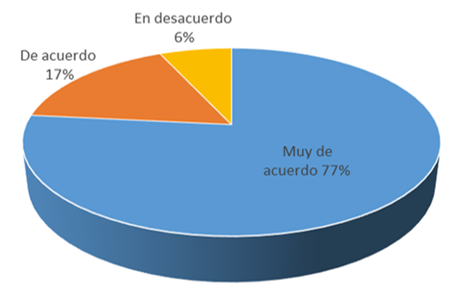
Figure 8. Optimisation of human resources
As for the decision-making of the massive load companies, they are managed in a centralised manner, as 70 % of the surveys show, since their main headquarters are located in departments such as Valle del Cauca, Cundinamarca, Antioquia, among others, and the orders are issued from there. They are generally companies of great national recognition. In contrast, nine companies within the municipality of Pasto manage their decision making in a decentralised manner. As shown in figure 8, they are regional branches that issue orders, direct and control their operations from the city of origin or in a certain way they are given autonomy so that the directors of each region can make the relevant decisions to allow an adequate performance of functions and development of operations in terms of route management and national cargo. It should be noted that the orders always revolve around the main head of the organisation, be it the board of directors, shareholders, or company managers.
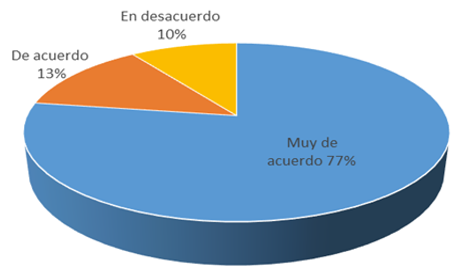
Figure 9. Optimisation of financial resources
For the companies, making a decision implies a decisive action that is expected to be the right thing that generates a positive impact within the company. Still, for the different groups within the organisations, this can be expressed with a high level of imposition, with 10 companies strongly disagreeing and eight disagreeing, accounting for 60 % of the surveys; the remaining 17 %, on the other hand, affirm that decision-making is carried out oppositely and allows a certain degree of democracy among the members of the top management, be it the board of directors, partners, among others. On the other hand, 23 %, corresponding to 7 companies, expressed a neutral position on the question, as shown in figure 9, because if it is a relevant or significant decision, it is taken by the organisation's directors. If it is easy to handle, it is taken by the heads of the different branches.
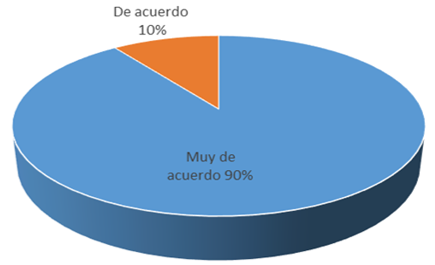
Figure 10. Optimisation of material resources
About material resources, the vast majority of the companies surveyed express their concern and care for the optimisation of these (figure 10), where 27 of the companies surveyed, corresponding to 90 %, are interested in the care and optimisation of the organisation's material resources, using strategies for the reuse of inputs and the management of waste such as paper, plastic and cardboard, which allow them to save the company's financial capital to a large extent. In the same way, 10 % of the companies agree with the optimisation of resources as they identify that it is beneficial for the organisation and takes care of the company's economic capital.
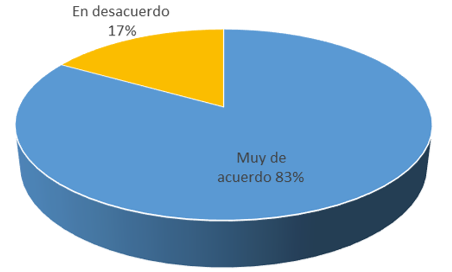
Figure 11. Personal and professional development of employees
The personal and professional development of employees is very important nowadays as it allows them to qualify and qualify the workforce within the companies and as shown in figure 11, comprising 25 companies, around 83 % prioritise personal and professional growth as they find in this factor a potential that allows the organisation to have integral professionals with correct development within their functions, increase their creativity and productivity, and also achieve a positive impact on both their external and internal clients. On the other hand, only 17 %, concentrated in 5 companies surveyed, stated that they do not encourage personal or professional growth, as they find apathy with the study and do not see it as a benefit but rather as an expense for the company, which is why for these companies the personal and professional development of the collaborators is not relevant.
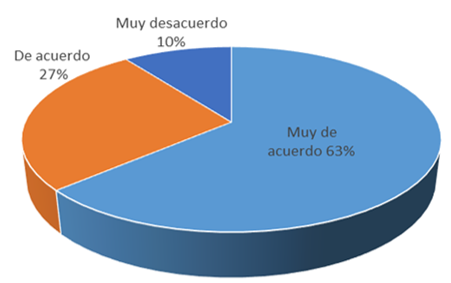
Figure 12. Promotion of social values, motivation and creativity of the employees
Analysing figure 12, 63 % of the companies provide an environment where social values, motivation and creativity of the group of collaborators can be fostered, as they have integrated working capital with a tendency to achieve objectives, this percentage goes hand in hand with 27 % of the companies that are in favour of and agree with the promotion of values inside and outside the organisation as part of their organisational culture. Only 10 % of the companies do not show an attitude towards the application of values, motivation or creativity, as they lack suitable personnel to allow them to explore and exploit the potential that each employee possesses.
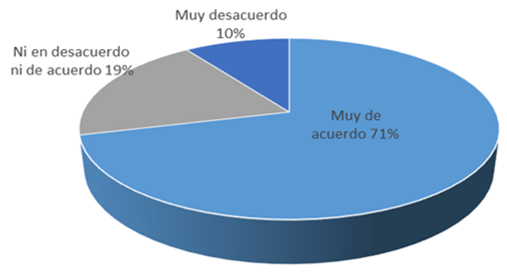
Figure 13. Internal and external customer satisfaction
In companies it is essential to maintain good relations with internal and external customers as they are of great help and serve as voice to voice or referrals for the customer line to expand much more, according to figure 13, 73 % focus on the satisfaction of both internal and external customers which allows them to develop their level of sales through constant shipments and discounts that build customer loyalty. In comparison, 20 % have a neutral perspective on customer satisfaction, since they manage tariffs that adjust to customer demand and have been managing customers for years and have kept them without affecting their level of sales, with satisfaction focused on the external customer. On the other hand, two companies do not focus on customer satisfaction because they have become accustomed to operating conservatively without a vision of growth or improving satisfaction levels.
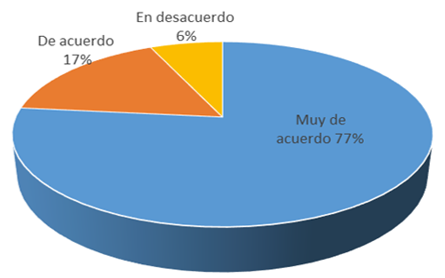
Figure 14. Strategies to compete in the market
In order to maintain or grow within the market and especially within the bulk cargo sector, companies have to implement strategies that allow them to compete in a certain way within the economic environment and according to 23 companies, they maintain a positive perspective and seek the implementation of strategies by the management to cover a completely changing market with a tendency towards globalisation, 17 % maintain an affirmative stance where they state that there are strategies that are not so strongly defined but they try to implement them in order to compete within the mass cargo sector, while the managers of 2 companies state that they do not focus on this and do not have a vision of growth within the mass cargo sector as is clearly reflected in figure 14.
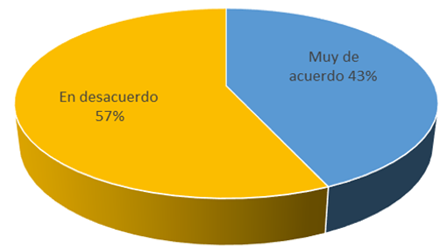
Figure 15. Incentives or financial benefits for meeting targets and achievements
Economic incentives within the organisations are of vital importance as they motivate and encourage the group of employees and create a sense of belonging, since under the guidelines of the organisational culture they include the culture of reward for effort, whether for the fulfilment of goals or personal achievements or within their functions, and as can be seen in figure 15, there is a divided position about this factor, since the implementation of an incentive system is not seen in 17 companies. This is because the only area in charge of opening new agreements is the management, which is often governed by the orders of capital cities, preventing the creation of a series of incentives for the group of collaborators. In comparison, 13 companies (43 %) affirm that compliance has economic benefits, thus establishing a culture of prizes and incentives, allowing the group of collaborators to remain motivated and committed to their daily work.
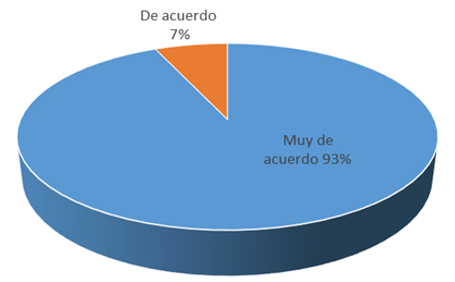
Figure 16. Mutual respect and trust between employees and the organisation's management
Respect inside and outside the organisation is very important among its members, as they focus on the fulfilment of objectives and constant work in teams, creating an atmosphere and culture of respect and this is reflected among the whole group of collaborators, according to figure 16, of the 30 companies surveyed. According to figure 21, of the 30 companies surveyed, 28 expressed a position of strong agreement on the existence of respect and mutual trust between the entire group of employees and the organisation's management, the remaining 7 % with 2 companies expressed a position of agreement, covering all of the 30 companies that focus positively and favourably on trust and respect within the organisation.
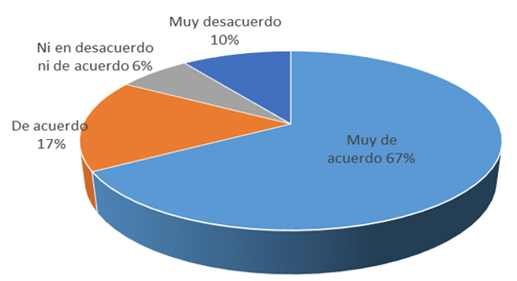
Figure 17. Regular meetings to communicate company problems
Figure 17 mentions the holding of meetings on a regular basis to provide information on the different problems of the organization, where it is validated that approximately 67 % of the companies hold a position of strong agreement and state that they provide spaces to make known the current situation of the organization, especially among the managers when there are relevant problems that only concern the senior management, while 5 companies hold them in agreement and even more so when there are operational problems involving the organization’s operational human capital. On the other hand, in two surveys a neutral position was expressed regarding this precept and finally, 3 companies out of the 30 surveyed stated that they do not hold periodic meetings to mention the organization’s problems because there is too much operation and no space is allowed to mention related problems and because there are also problems within the organization that are solved as soon as possible without affecting the activity of the companies.
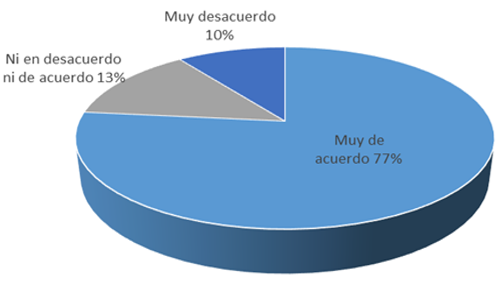
Figure 18. Stability of employment of employees
The job stability of the group of collaborators guarantees security and trust among its members, as this ensures stability and security and contributes to the organisation in reducing unnecessary costs in training and inductions and reduces the staff turnover indicator, creating job stability and a sense of belonging with the whole group of collaborators, and as shown in figure 18, of the 30 companies surveyed, 27 respond favourably and strongly agree with the job stability provided by the organisation, creating a positive and favourable impact on human capital, allowing self-realisation and efficiency in their work, 27 respond favourably and strongly agree with the job stability provided by the organisation, creating a positive and favourable impact on human capital, allowing self-realisation and efficiency in their work, while 4 companies express a neutral position with regard to stability, as the employee is a participant in this achievement and if any offence is committed against the regulations, this stability will be affected and if it is not, it can guarantee their stability within the organisation. Finally, three companies express a position of disagreement because there have been recruitment filters where the right people are not chosen, and there have been breaches of the internal work regulations.
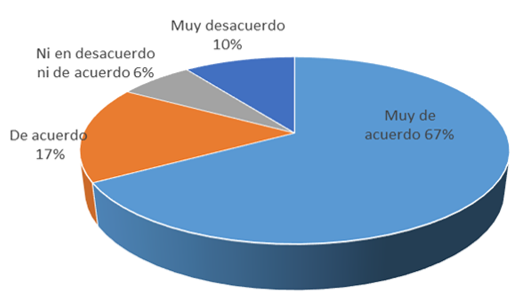
Figure 19. Family atmosphere of the organisation
A fundamental aspect within organizations today is the creation of pleasant and suitable workspaces and environments for the group of collaborators, which in turn are motivating and inspiring, welcoming and familiar within the organization because, in a certain way, the workplace becomes a second home and a large part of the time is destined to fulfilling work obligations and the other part is for personal life and sharing with the family, such as children, spouses, and other family roles. Therefore, in figure 19, the companies surveyed state that 20 of them provide pleasant and familiar spaces for the development of the functions of the workgroup and allow optimal performance of their tasks, maintaining a position of strong agreement. In contrast, five companies are presented with a position of agreement in response to the issue in question since they focus on developing activities such as birthdays, achievements of human capital, and recognitions, among others, thus allowing them to create family spaces and environments within the organization. Only two companies, corresponding to 6 % of those surveyed, affirm that on certain occasions a family atmosphere is maintained but on others it is not achieved, since there are different points of view among its members and agreements that benefit the group of collaborators are not reached, finally three companies state that the organizations are not concerned with the creation of healthy and pleasant working environments due to differences among its members, affecting their performance in the development of their functions.
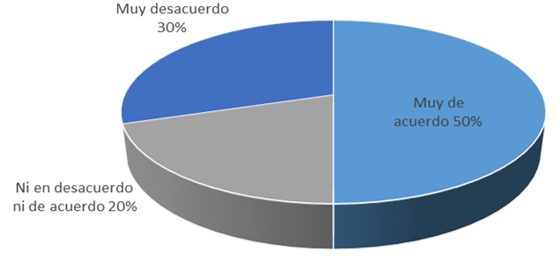
Figure 20. Dynamic and entrepreneurial company
In the following figure corresponding to 20, the perspective of the companies is defined in terms of their dynamism and entrepreneurship, where there are positions of dynamism and entrepreneurship, which are fundamental axes for the development of their corporate purpose and references for the fulfillment of the corporate objectives, on the other hand, six companies maintain a neutral stance on the question, as they do not identify on several occasions this entrepreneurial approach within the organization, but they do highlight the dynamism of their operation to carry out their corporate purpose, it should be noted that this dynamism is focused on their day-to-day work but without having a clear vision. The 30 %, corresponding to 9 of the surveyed companies, conclude that they disagree since there is no evidence of dynamism or entrepreneurship on their part. As seen in the previous figures, their interest lies in remaining in the market without venturing into it.
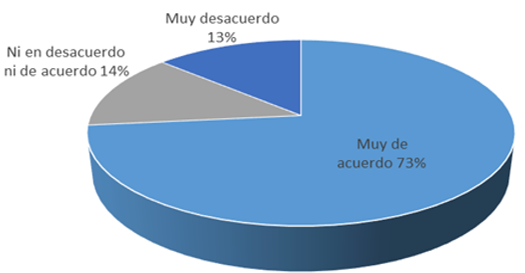
Figure 21. Importance of business in relation to competitiveness and achievement
The approach related to competitiveness and achievement within the companies in the mass transport sector has a positive impact as can be seen in figure 21, where 22 companies state that as leaders and managers of these companies, the ideal of any organisation is to be competent and achieve different corporate objectives and that in turn they also depend on the orders issued by the company's management regardless of the level of centralisation that they manage. This makes it impossible to make decisions autonomously, while 4 companies express a neutral stance towards this concept, as they do not know whether the company's projection is focused on competitiveness and achievement. According to the analysis, and in last place is the position of the remaining 4 companies that state that they strongly disagree that the companies are given the importance in relation to competitiveness and achievement, because their organisational objective is to stay within the mass transport sector without having a more objective vision that establishes parameters for the accomplishment of the goals.

Figure 22. Stability of employees
The job stability of the employees depends to a large extent on the level of performance of their functions and their adaptability within the organisation, and as massive companies expressed with the support of the managers and leaders, they state through the consultation instrument that it is of vital importance in order not to incur unnecessary costs and expenses due to training and reinduction, but on the contrary to guarantee spaces and working conditions that strengthen the work of the group of employees and motivate human capital in general, and according to figure 22, the concept of job stability for employees is analysed, with 25 companies responding affirmatively and strongly in agreement with guaranteeing stability for human capital. Only one of the 30 companies, corresponding to 3 % of those surveyed, stated that the organisation does not focus its interest on the care of human capital, not because of efficiency but because of the type of culture that characterises the organisation, where it is imposed without allowing empowerment in the development of functions, and only one of the 30 companies, corresponding to 3 % of those surveyed, stated that the organisation does not focus its interest on the care of human capital, not because of efficiency but because of the type of culture that characterises the organisation, where it is imposed without allowing empowerment in the development of functions, but because of the kind of culture that characterises the organisation, where it is imposed without allowing empowerment in the development of functions.

Figure 23. Managers mentoring or teaching
Organisations according to traditional management handle the concept of the boss without taking into account that everything changes and evolves over time, on the one hand, the boss imposes orders without guiding, while the leader serves as a guide for the group of collaborators, which is why the following five questions detail the perspective of each leader of the organisation in relation to their actions within the organisation, detailed as a mentor or teacher, according to figure 23, 11 companies positively and strongly agree, as they see the leaders as a support and guide who focuses on teaching and creating a sense of belonging within the organization. On the other hand, 11 of the 30 companies surveyed express an intermediate position, where they do not determine whether the managers are mentors or teachers, as they do not know the difference between the two concepts; finally, 8 companies state that they disagree that the managers are mentors or teachers, as the operational part does not show the support that can be provided from a desk for the achievement of organisational objectives.
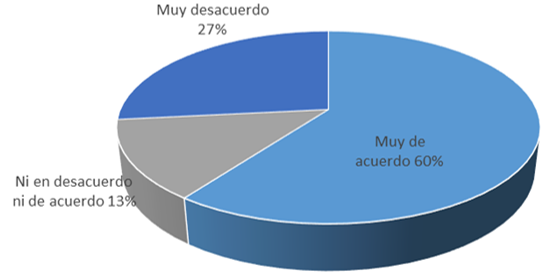
Figure 24. Technical managers
To analyze the concept of figure 24, where it is determined whether the directives are characterized by being technical, clarification is made on the subject in question since managing this concept involves carrying out the administrative process, and under this guideline, the directives of the organizations coordinate and carry out plans that allow the objectives of the massive load companies to be met, where 18 companies state that the directives are purely technical and carry out their operation based on transparent administration and logistics fundamentals, primarily since the achievement of the companies' objectives is based on these guidelines. While 8 of the companies surveyed strongly disagreed because the leaders of the surveyed companies lack basic management knowledge and their operation is based on clear empirical guidelines that have allowed them to carry out their operations satisfactorily. Finally, 4 of the 30 companies surveyed express an intermediate perspective and start from the idea of managing the operation under management fundamentals with technical concepts and guidelines that go hand in hand with the experience reflected in their working life without affecting the achievement of corporate objectives.
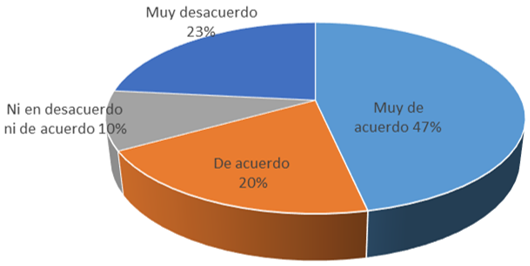
Figure 25. Conservative directives
Under the traditional guidelines of business management and as analysed in figure 25, 14 companies confirm that the directives adhere to conservative guidelines and have been of great benefit and contribute to the development of operations taking into account changes in the competitive environment, while 7 companies accept innovative ideas for this reason are in disagreement maintaining an orientation to change and globalisation, on the other hand 3 companies express a neutral position and impartiality is reflected in relation to the directives being conservative or maintaining innovative ideas.
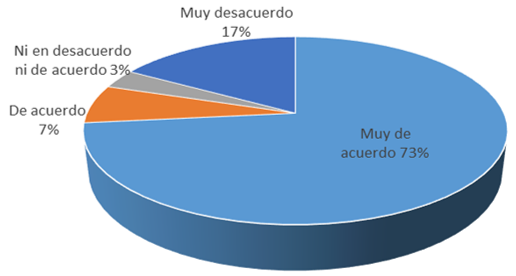
Figure 26. Coordinating directives
As directives are based on administrative foundations and general management guidelines, they focus their efforts on maintaining coordination throughout their operations, which is carried out with the aim of achieving the organisation's goals. The figure 26 shows the perspective of 22 companies that state that coordination with management is vital for the development of the company, while 5 companies strongly disagree with the coordination established by management, as this process is not developed, leaving the execution of their work to their own free will and the expertise of the company's leaders. Only one company expressed a neutral position with regard to coordination with management due to the lack of communication, which in turn makes it possible to improve the performance of functions inside and outside the organisation.

Figure 27. Administrative directives
Approximately 87 % of the companies surveyed, corresponding to 26 companies, stated that they strongly agree that the directors are characterised by being administrators and focus their efforts under the guidelines of the general administration and carry out the clear fulfilment of the corporate objectives of the companies; only one company stated that it strongly disagrees that the directors are administrators as they leave the weight of the decisions and development of the operation in the hands of the operational managers, as shown in figure 27.
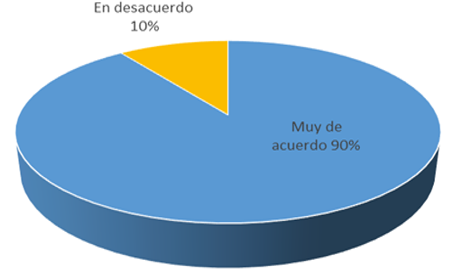
Figure 28. Loyalty and tradition as a cohesive factor
Loyalty and tradition are vital to the organization, and according to the companies surveyed and figure 28, 27 companies strongly agree. In comparison, three companies disagree because they are open to change and innovation. It should be noted that each company maintains its essence and its way of working and carrying out the processes that are carried out during the social action of the companies; for this reason, the 27 companies surveyed express a position of strong agreement in the close relationship between loyalty and tradition, through which in a certain way they have allowed them to remain in the market.
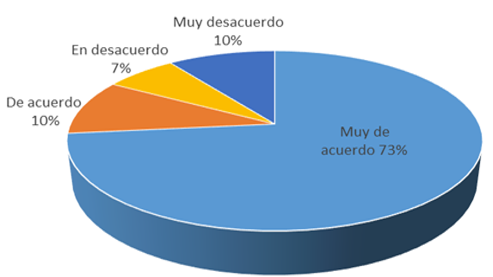
Figure 29. Goals and tasks as a cohesive factor
A large part of the functions and objectives of the organizations are guided by the achievement of goals and tasks, among others, and their final objective is the achievement of objectives within and outside the organizations, according to the companies surveyed. Their point of view is strengthened since 22 companies express a position of strong agreement. In comparison, three companies state that they do not find a relationship between the execution of tasks and goals as a cohesive factor because they do not meet clear growth objectives and good performance of functions. In comparison, the two companies have a neutral position, neither disagreeing nor agreeing, as they do not identify the relationship between goals and tasks as described in figure 29 above.
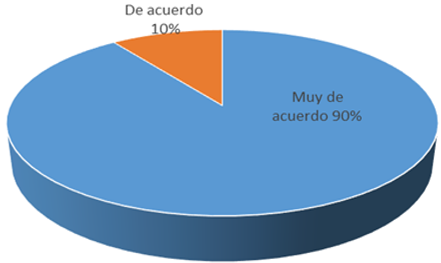
Figure 30. Formal rules and policies as a cohesive factor
Formal policies and rules within an organization are of great importance because they define clear guidelines for the fulfillment of functions, avoid internal conflicts, and are directed toward the achievement of objectives; according to figure 30, the vast majority of companies surveyed with a total of 27 companies state that there is an excellent relationship between the rules and formal policies inside and outside the organization and on which they are based to achieve optimal performance of functions that lead to the proper achievement of objectives, as well as the remaining three companies with an affirmative position answering according to the question.
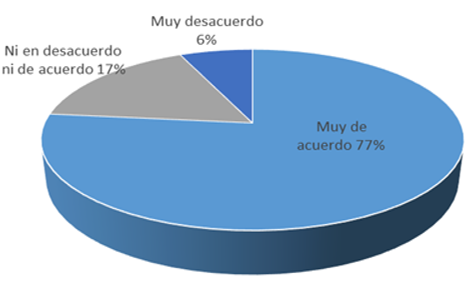
Figure 31. Human capital achievements and learning
Twenty-three of the companies surveyed confirm that they are concerned about being participants in the achievements and learning of human capital, manifested through internal recognition such as promotions and details that enhance their training and seek to improve their professional profile, thereby strengthening their personal growth and generating a value proposition for human talent and enabling the potential of different skills. On the other hand, 2 of the companies surveyed stated that they do not provide this growth benefit due to work schedules and do not see opportunities for improvement when accessing training systems, as analyzed in figure 31 above.
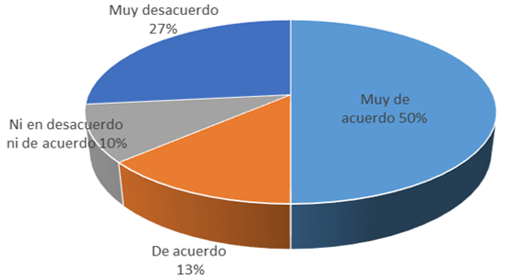
Figure 32. Recognition as a true value
Recognition is a fundamental value that companies create as a value proposition for internal and external customers seen from the internal side of the surveyed companies, 15 of them affirm that they value recognition as an opportunity for growth for the group of collaborators and loyalty processes with external and internal customers; on the other hand, three companies state that they strongly disagree, as this recognition should be expressed in monetary terms and turn motivate the group of collaborators. Meanwhile, eight companies express a neutral point of view where they neither agree nor disagree, as there is no evidence of any kind of recognition from the companies, according to figure 32.
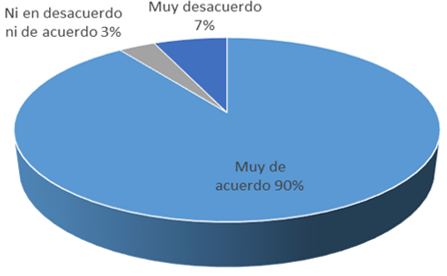
Figure 33. Feedback from partners
Feedback, as a fundamental part of teamwork and a key aspect within the development of functions within an organization, allows for a vision that designs a clear path towards the achievement of objectives; for this reason, it is analyzed according to figure 33, where 27 companies state that they strongly agree with the feedback to the group of collaborators as it generates self-confidence in the work and its functions, strengthening what is being done, strengthening and reinforcing skills and improving the processes of the companies. Only 2 of the 30 companies surveyed stated that they strongly disagreed because they do not provide opportunities to evaluate these issues to improve the performance of the functions of the group of collaborators.

Figure 34. Honest sharing of opinions among partners
The group of collaborators should be characterized by being a working team, amid trust and honesty and, in turn, should be allowed to express themselves honestly without offending any member, thus creating a more pleasant environment with respectful ideas that are coherent with the objectives of the companies, which is evident in 18 of the companies surveyed that affirm that their group of collaborators share their opinions honestly, reflecting their point of view on the development of daily activities; figure 34 also shows that 2 of the 30 companies surveyed maintain a neutral stance on this issue, as there have been internal conflicts due to how the group, in general, expresses itself, and that on other occasions they are allowed to express their opinion but against their way of thinking to be in line with the company's guidelines without having any negative repercussions against the employee. Finally, four companies say that they are not taken into account to honestly give their point of view, but they have no alternative but to go along with what the company says.
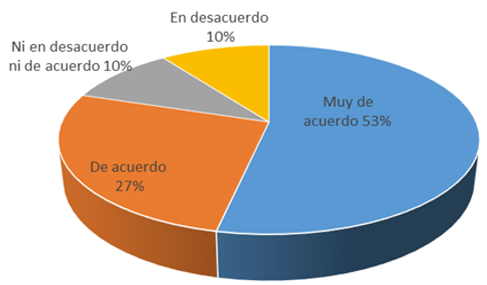
Figure 35. The organisation allows for input and feedback
As shown in figure 35, 53 % of the surveyed companies state that the active participation of the group of collaborators is guaranteed, especially in operational processes, to validate aspects of improvement and thus create channels of communication between members. In contrast, three companies express their disagreement as the opinion of the group of collaborators is not taken into account but is entrusted to the administrative part in decision making, thus creating working environments that cohere and do not allow the development of skills of the group of collaborators, as well as self-confidence in the development of their functions. Only three companies have stated that they can give this opinion concerning the operational aspect. Still, on other occasions, it is not taken into account, or if it is taken into account, it is not taken into account, but not taken to the level of action.

Figure 36. Flexibility in time-taking in case of eventualities
Day-to-day activities are linked to the development of eventualities inside and outside the organization, whether due to external agents such as demonstrations, rain, traffic, meetings, among others, and according to 20 of the 30 companies surveyed, as shown in figure 36, 20 of the 30 companies surveyed, as shown in figure 36, responded very much in agreement, as their companies provide this alternative in the event of eventualities with time that on many occasions should not be compensated, but is granted with internal management to support the employee. In comparison, four companies expressed dissatisfaction, responding very much in disagreement, as this flexibility is not allowed. Penalties are incurred for staff who arrive late without justification or present evidence of their eventuality.
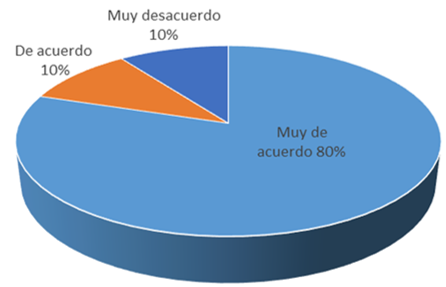
Figure 37. Organisation and a healthy work-life balance
Figure 37 shows the perception of 24 companies about its positive impact. It shows that they strongly agree that human capital should maintain a healthy balance between their work and personal life, providing flexibility between their work and the family or personal life of each employee, providing quality of life, and managing the number of hours worked and the time spent with the family. Only three companies stated that they strongly disagreed that their companies should provide them with a healthy work-life balance, as the pace of operations and the lack of personnel have meant that they work more than the legal 8 hours a day with additional income, but with a negative impact on the time required to run errands or do personal things.

Figure 38. Work and contribution to the achievement of objectives
In figure 38, in relation to the contribution of work towards the achievement of objectives according to the companies surveyed, 18 of them stated that they strongly agree, as the achievement of objectives is achieved with the day-to-day contribution of each of the employees in joint action, articulating the other areas of the companies to achieve an action that allows the sustenance of each one of the homes of the collaborators, as well as 9 more companies that responded in favour and agree that the work of each collaborator is of vital importance in order to deliver service and in the case of the companies of massive load shipments on time and in good condition.
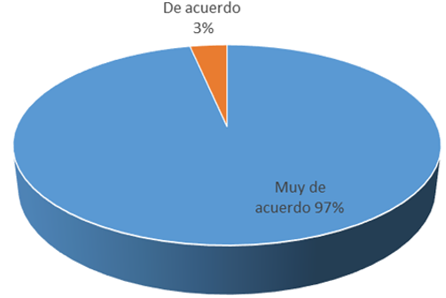
Figure 39. Clear responsibilities within the organisation
The responsibilities in each organization allow for the maintenance of guidelines for the development of the activities of each function and allow for the execution and optimal performance of tasks during the working life of each employee within the organization. 29 of the 30 companies surveyed stated that they were very much in agreement due to the clear existence of function manuals and a sense of belonging on the part of the group of employees, which will allow for the adequate development of functions and tasks that with training processes are reinforced and contribute to the fulfillment of organizational objectives, according to figure 39.
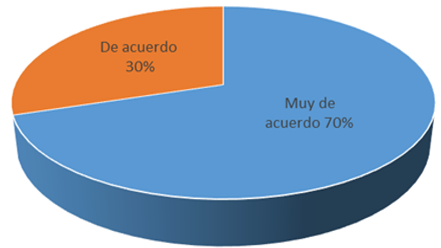
Figure 40. Skills and strengths in human capital functions
It is imperative that human capital has certain types of skills and that within the organization, it develops skills as strengths for the performance of the functions and tasks assigned and, in this way, contributes to the achievement of corporate objectives for which 21 of the companies surveyed responded very much in agreement as it is of vital importance for the organizations that the group of collaborators makes available to the company the different skills they possess to put them into practice within the development of the functions. As shown in figure 40, 9 companies responded positively, stating that they agree that human capital should be made known with the different skills to achieve the company's function and objectives.
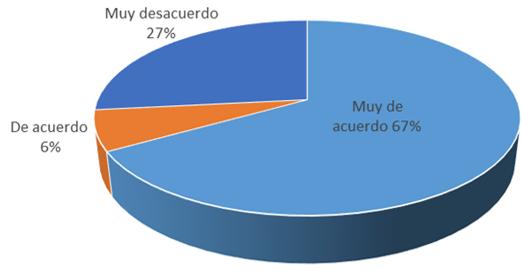
Figure 41. Opportunity for skills upgrading in the company
In terms of the opportunities for skills improvement offered by companies in the bulk cargo sector, there is a positive trend since, as shown in figure 41, 20 of the companies surveyed strongly agree that human capital is allowed to develop and improve skills to develop skills and contribute to a large extent to their functions as part of personal development and company growth, eight companies strongly disagreed as they did not see support from the organization in the development of skills that would benefit human capital and the company as a whole due to cross-shift schedules.
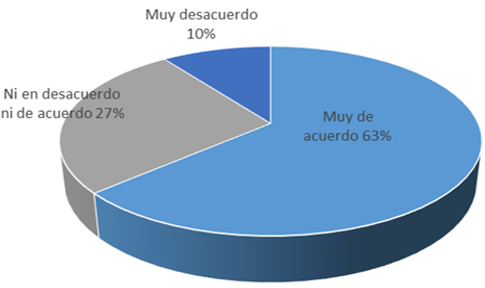
Figure 42. Freedom to decide how to carry out the work
From the operational point of view, 19 companies consider that employees have autonomy in the way they carry out their functions as long as this does not affect their productivity and service, by the internal regulations and function manuals contained in the different positions, thus providing autonomy and empowerment for the employee, as can be seen in figure 42, only three companies express a strongly disagreed point of view, as management and administration prohibits the performance of functions different from the traditional way of doing things in the companies, depriving managers of the right to make their own decisions for the group of collaborators to improve productivity, performance and delivery times.

Figure 43. Good level of transparency with the partner group
For 26 companies surveyed, corresponding to 87 %, the levels of transparency are considered very important and they maintain their perspective very much in agreement, this is due to the fact that within the massive load companies it allows to have honest personnel that allows the flow of ideas and transparency towards the group of collaborators, according to figure 43, in a similar way 4 companies maintain a positive affirmation and agree that the transparency that is evident in the company is notorious and allows clear and defined communication, creating environments of trust and responsibility.
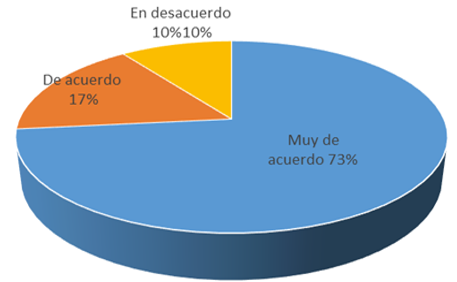
Figure 44. Reciprocal collaboration between the working capital
The perspective in relation to mutual collaboration between the group of collaborators is notorious and very favourable for 22 of the 30 companies surveyed, as they express their position in agreement that they are a working group that supports each other, taking into account that the objectives of the organisations depend on teamwork and that the effort is of collective benefit for both the company and the group of collaborators, As can be seen in figure 44, only 3 companies disagree, as they consider that within these companies there is an atmosphere of selfishness and lack of collaboration between the group of collaborators, often incurring in operational errors that are not convenient for the development of the corporate purpose of the companies and, incidentally, affect the achievement of the objectives of the organisations.
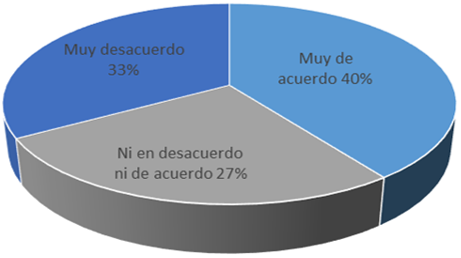
Figure 45. Acceptance of differing opinions among the group of collaborators
There are divided opinions about accepting the views and ideas that differ from those of others. As shown in figure 45, 12 companies surveyed stated that they strongly agree and allow the acceptance of ideas that differ from those of the operational heads or managers, as they are open-minded to improvements and constructive contributions that will enable them to optimise resources and improve productivity. On the other hand, 10 companies out of the 30 surveyed stated that they strongly disagreed, as they were not allowed to give their point of view, thus inhibiting the group in terms of opportunities for improvement for the company. While eight companies expressed a neutral point of view, neither disagreeing nor agreeing, as on certain occasions they are allowed to contribute ideas, but the decision-maker is the manager and in their opinion things are well executed, without taking into account the impact generated in the group of collaborators and the operational part and, incidentally, the impact on the achievement of corporate objectives.
Diagnosis of the Organizational Culture of the Companies of the Sector Transport of Massive Load in the City of Pasto
As part of the present investigative work based on analyzing the organizational culture with tools and mechanisms of consultation that developed within the theory and the work of field, motivated to the investigator to carry out in first instance a diagnosis of the organizational culture of the companies of the sector transport of massive load in the city of Pasto and that like first specific objective of the present work was carried out using the application of a questionnaire with 36 items or questions in question, where the disposition of the 30 companies was relevant and primordial to carry out the demanding work of field with visit to the companies and coordination of agendamiento of appointment and displacement until the companies of the sector of massive load within the city of Pasto.
Within this questionnaire, key questions were asked on a scale of 1 to 5, which allowed the identification of features of the organisational culture focused on the fundamental parameters or axes defined within the theoretical framework, thus analysing the rules, results, people and power of the organisations, which allowed the respondent to determine their position about the central concept of this research. With this diagnosis, it was possible to identify the organizational culture's characteristic features and investigate the research topic.
Finally, with the implementation of the model of survey to the managers of the companies of the sector of massive load allowed to carry out to the investigator an analysis that defined inside the approach of investigation of the present work was evidenced thanks to the method of observation inside the development of the functions of the human capital, characteristics of the organizational culture like corporate image, philosophy, mission, vision and values of the organization, likewise, its atmosphere of work, norms and sense of identity on the part of the group of collaborators and using the identification of own objectives of each organization.
Identification of the Type of Organisational Culture of the Companies of the Sector of Transport of Massive Load
Following the analysis of the current situation of the companies of the sector of massive load transport in the city of Pasto, which was developed within the present work, and in a general way, it was possible to identify the type of organizational culture of the companies of the sector of massive load transport.
Focus with orientation towards the power
According to the theoretical frame referring to the writing by the psychologist Roger Harrison the organizational culture is classified based on an axis of ideology by means of which the companies define a specific orientation either towards people, power, results and norms. Based on this orientation and the application of the research instrument, it was possible to identify that the massive cargo companies maintain an organisational culture with an orientation towards power, as they concentrate their efforts on increasing the levels of competitiveness achieved through day-to-day work and with the clear objective of satisfying the demand for shipping and receiving goods at a national level, reducing delivery times, among other things. It is essential to highlight that the creation of a structure seen from the administrative part is relevant because thanks to the creation of a structure of procedures to carry out the execution of its social reason and the coordination of the human capital of the companies will allow consequently to achieve the objectives of the companies of massive load.
The growth of the organisations and based on the guidelines of power and with which the companies are guaranteed to maintain and position themselves in the market, was of great importance even though there is a certain tendency towards non-positioning within the market, but that the majority of the companies surveyed defined their orientation towards power and positioning within the mass cargo sector. This concept is taken by the directors of the companies, among which are mentioned Transoriente Ltda, Transportadora Comercial Colombia TCC, Compañía Distribuidora de Carga CDC, Servientrega, among others, as a clear corporate objective that allows the companies in the sector to join forces to achieve it thanks to technological tools, skilled labour, improvement of processes and management of storage of goods.
On the other hand, it is found that the managers and leaders of the organisations, especially of massive load of the city of Pasto establish strategies that allow the attainment of organisational objectives and that, analysed under Harrison's approaches, allow to give endorsement to the same one, since independent to the social reason of the organisations, the leaders are called to establish strategies that will enable the human capital to achieve positioning to be able to compete inside the market or sector of massive load specifically. Thanks to the trends of globalisation and the different changes, especially those generated by the pandemic that attacked the whole world without exception, reference is made to Roger Harrison, since 50 % of the companies surveyed are characterised by being dynamic and enterprising. In comparison, 25 % state that they do not have this vision of growth and innovation, either through technological tools or specialisation of the workforce, which in turn, allows them to be part of the power-oriented approach that the author refers to, according to the theoretical framework.
Rule-oriented approach
About the rule-oriented approach, it is concluded that within the companies of the mass cargo transport sector, among which we can mention Asociación de Transportadores de Carga, Andina de Carga Internacional, Transportadora de Carga por Colombia, among others, traits were evidenced that allow to identify its wide relation with this approach since the starting point of the orientation towards the norms initiates from the decision making in a centralized way in the directive level who from the main cities like Cali, Medellín, Bogotá among others and from where the operation is managed and instructions are emitted and are given for the different regional ones.
In addition, the present investigation allowed to identify that in general, the companies of the sector focus intensely in the fulfillment of norms and responsibilities that each position has, norms contained within the different manuals like manual of functions and procedures, internal regulations of the companies, instructive of transport of load and within which the guidelines are contemplated to fulfill on the part of the human capital and for the good performance of functions and that in turn, allow to obtain the fulfillment of corporative objectives; In addition to the above, it is mentioned that each company manages its mission, vision, corporate values contained within the strategic direction that allows companies in the mass cargo sector with the support of senior management, to determine the clear course and promote activities and policies that guide and empower all human capital towards the achievement of the objectives of the organisations.
This approach was evidenced by the companies handling the massive load in Pasto, handling corporate distinctiveness as the mark's identity. That about the elements that allow to identify the essence of the organizational culture and that are contained within the theoretical frame of the present investigative work, allowed to identify certain characteristic elements as they are: the logos, marks and distinctive of the companies of massive load, to same, key aspects were identified as they are the habits and routines of the members of the companies, participation in meetings, schedules of entrance and exit, attitudes among others.
The role of the directives is fundamental in all aspects inside and outside the organisation and that thanks to the implemented strategies the achievement of the objectives of the organisations will depend and that according to the evidenced in the field work and obtained by means of the instrument of investigation, it allowed to identify the characteristic of the directives either as mentors or teachers, technicians, coordinators or administrators, and that indeed it was validated that inside the companies of massive load of the city of Pasto. It is clearly reflected that the managers of these companies carry out their work in such a way that it is possible to identify leaders who guide the companies and that thanks to what Roger Harrison proposed in the theoretical framework in his approach with orientation towards the rules, it is of vital importance since there are leaders who apply the regulations within the companies and ensure that their organisational culture is focused on the fulfilment of rules and responsibilities.
This focus on norms and compliance with responsibilities goes hand in hand with internal labour standards, which is why it was identified that the massive load companies reflect a determining and coherent factor that maintains a relationship between one aspect and another, such as formal rules and policies, where the directors and leaders focus their efforts on creating strategies based on the focus with orientation towards the norms, allowing the efforts of human capital to be oriented with clear rules that will enable an optimal performance of functions both within the companies and outside them, visualised by the external client when carrying out their activities of reception and delivery of merchandise.
Finally the companies of massive load was found congruence in front of the cohesive factor inside the same ones since they are the loyalty and the tradition that stick to the norms and allow to maintain a conservative position as far as the development of their activities for which, the majority of the companies conclude that inside their policies they are the loyalty and the tradition, allowing of this way to identify the approach with orientation to norms inside the companies of the sector of massive load of the city of pasto.
Results-oriented approach
Following the order of the approaches of the organizational culture and in which the orientation towards the results of the organizations is mentioned and as premise before the objectives of the same ones, it is made relation to the results like development and aim of the activities of the companies and especially of those of the sector transport of massive load, for which it was evidenced by means of the work of field that exists great tendency in most of the companies among which we can mention Intermodal, Serviveloz, Transportadora Comercial Colombia TCC, Envia, Coordinadora Mercantil, since the attainment of objectives is relevant and that thanks to the integration of the different areas of the organizations seen from the directive part, they concentrate and join forces to create a synergy to be able to reach the organizational objectives. As a result of this interaction, the managers of the companies of the massive load companies are in charge of guaranteeing these results so that the organisation maintains its horizon and allows, in a certain way, to maintain or grow within the massive load sector.
In contrast with the theoretical framework, it is evident that there is a great tendency of the massive load companies towards the focus on results, as the companies themselves ensure the optimisation of financial resources, materials and human talent, thus allowing the companies to achieve better results, greater efficiency and better performance in the development of their activities; it is worth highlighting that the optimisation of resources is evidenced by the financial planning that the companies manage thanks to the budgets allocated to them and the adequate management of financial capital; The appropriate use of materials, recycling and use of materials such as wood, cardboard, among others, as well as the printing of stationery whenever necessary; finally, optimisation is reflected in the development of multitasking within the human capital, creating training that allows the use of different skills and thus improving the performance and development of the operation.
The characteristic of any organisation focused on results is denoted by the fact that clearly defined goals and objectives are established within the organisation, which, in addition to being mentioned as part of the elements of the organisational culture, are part of the vision of the companies in general and are part of their essence in pursuit of the achievement of results, It should be noted that the companies hold regular meetings within the companies to establish communication on the different problems that prevent the achievement of the results measured as factors and variables and thus create strategies to mitigate and eliminate the various risks to implement measures that cover the specific areas.
People-oriented approach
Companies in underdeveloped countries have a strong tendency towards the power-oriented approach. In contrast, in developed countries they have a strong tendency towards the people-oriented approach, which is mentioned in the theoretical framework in the studies and analysis of psychologist John Pencavel, where he states that working fewer hours could not compromise the results of companies in a certain way, thus allowing flexibility with human capital and creating a mutual benefit between the company and the employee.
According to the people-oriented approach, it was possible to identify in the research and field work those aspects relevant to the development of human capital and the use of their skills to develop activities and thus contribute to the achievement of the objectives of the companies; For the vast majority of the companies, the personal and professional development of their human capital is of great relevance, as they identify in it an opening towards the development of different skills that within the development of activities and functions allows a greater qualification of their working capital, empowers and provides autonomy and self-realisation; among the companies that have a people-oriented approach are Servientrega, Saferbo, Coordinadora Mercantil, Transprensa.
Similarly, it was found that within the companies in the mass transport sector, social values, motivation and the creativity of the employees are promoted, making this a potential that, with the support of the human talent area within the companies, allows them to have capital committed to their work, encouraged and willing to perform their duties pleasantly, creating a working environment that empowers their personal and professional development. Contrasted with the three levels proposed by Edgar Schein, described in the theoretical framework, it relates to the level of adapted values, given that the collaborator fulfils the functions of his position and what he has acquired during his working life with training and inductions, consolidating the personnel in general and that he presents himself and projects himself to the market in the day to day of his work, representing a greater knowledge of the organisational culture before the external client and defines his position through his service and treatment.
Respect and trust inside and outside the organisation is of great importance, which is why the managers of the companies of massive cargo concentrate their efforts on promoting them, and this in turn is part of the people-oriented approach proposed by Harrison, since, according to what has been shown in the companies and the responses of the managers and leaders of the companies, it makes it possible to create spaces that foster a healthy and pleasant environment with levels of mutual trust within the group of collaborators. Such a people-oriented approach would not be valid without stability as a factor of vital importance. It is reflected within the mass-loading companies as the managers stated that job stability is guaranteed and that, thanks to the performance of the human capital position, it creates a culture of stability. The family atmosphere within the massive load companies is reflected in the development of routine activities, as the managers stated that the company is the second home and that a large part of the time is used to carry out paid activities such as their work in the different areas, the companies ensure that they maintain spaces such as cafeterias, showers and recreational spaces to guarantee a family atmosphere for the group of collaborators.
Within the people-oriented approach, there is feedback to the group of collaborators, which was reflected in the development of activities to instruct and create assertive communication within the development of the functions of human capital, who are the image of the company before the external client. On the other hand, the active participation of the vast majority of companies in the bulk cargo sector is highlighted, since they distinguish the achievements obtained by the staff in terms of their learning and with details that motivate and encourage the development of human capital skills; with internal celebrations and recognition and promotions. The approach was also reflected in the fact that there is flexibility in terms of working hours in the face of eventualities that arise daily, as no one is exempt from accidents, domestic calamities, external factors such as traffic and weather, meetings, medical appointments, among others, thanks to the fact that the leaders of the organisations have a human sense in the face of such eventualities, being ready to deal with them, creating solutions that do not affect productivity and the development of routine activities.
In this way it is mentioned that the massive load companies have a healthy balance between work and personal life, which makes strong the inclination towards the organisational culture with orientation towards people, being one of the most outstanding and primordial typologies and for which the companies must focus without leaving aside the consequences of capitalism and concentrate more of their potential towards the humanism of the companies at present, the contribution of the companies of massive load is exalted in the search to watch over the well-being of their human capital who is the representative of the brand before the external client.
From the above it can be concluded that companies in the bulk cargo sector have a greater tendency to focus on power and people, as most of the companies claim to have a mentality of growth, innovation, creation of strategies, maintaining and achieving positioning within the market and keeping alive the ideology that the most important things for companies in the bulk cargo sector are competitiveness and achievement, and at the same time caring for and encouraging the growth of human capital, creating pleasant spaces and a family atmosphere within the organisations. On the other hand, it is emphasised that companies in general and due to their nature and the profit generated do not leave aside the approaches about standards and results, since the achievement of corporate objectives and the growth of the companies within the sector to which they belong depend on it.
Factors of the Organizational Culture that have Contributed to the Success, Leadership, and Competitiveness of the Companies in the Transport Sector of Massive Load
Following the guidelines of the present work of investigation focused towards the organizational culture, it gives place to the development of the third specific objective in where the factors of the organizational culture are determined that have influenced in the success, leadership and competitiveness of the companies of the sector transport of massive load in the city of Pasto, it is possible to emphasize that based on the sample they are companies with remarkable trajectory within the sector of enormous load and others that take less than 5 years in the activity, this does that the objectives and levels of competitiveness are contextualized in different aspects: economic, political and social aspects, which are focused on the standards and results of the other companies in the sector, and which in turn, do not leave aside their corporate vision, achievement of results and their mission within the same.
In this way, it is emphasised that to a certain extent, all the companies of the massive cargo sector have factors of success, leadership and competitiveness, which have allowed them to maintain or be leaders in the transport sector, thus allowing the visualisation of aspects of the organisational culture that contribute to and influence the regional and national economy, among which the following can be mentioned:
The companies of the massive cargo sector affirm and highlight that these success factors are focused on increasing the levels of competitiveness as part of their strategic planning reflected in their mission, vision and corporate objectives; always focused as an organisation on achieving goals and results making in turn, more solid and firm organisations creating an organisational culture focused on achievement and results, implementing operational and commercial strategies that allow in a certain way to increase sales and develop a sense of belonging on the part of the group of collaborators who have direct contact in the services of reception and shipment of goods.
In addition to the above factor, the success is attributed to the contextualisation of their organisational culture because most companies focus on market positioning, especially in the bulk cargo sector, which is of great importance. After all, it is more consistent and rigid in the face of competition; The mere fact that decisions are made centrally allows the leadership factor of the first level managers in the organisation, makes the success of its organisational culture lies in the fact that decisions have a positive impact from their implementation to their completion, creating commitment and support from the leader or managers of the bulk cargo companies.
Another fundamental success factor focuses on optimizing human, financial, and material resources, which, thanks to the appropriate use of resources, allows the organisational culture to be corporately and socially responsible. The optimisation of human talent allows the organisational culture to be more flexible in the development of functions, empowering the group of collaborators in decision-making and developing different skills within the organisation and self-realisation.
On the other hand, it is essential to highlight that the organisational culture is based on the involvement of the different leading actors such as the group of collaborators, the organisation's management and the client as such, who is ultimately the one who perceives and interprets the message delivered through the corporate image, language and service, therefore, the human factor is of vital importance and revolves around the organisational culture, becoming a determining factor in driving the growth of companies in the mass transport sector.
As key factors of success in carrying out the topic of investigation, it is emphasized that the companies of massive load watch over the personal and professional development of the collaborators, creating agreements of qualification with centres of study like the national service of learning SENA, where the different skills are deepened and certified that allow personal growth and contribute towards the achievement of corporative objectives.
It is worth noting that the massive load companies provide familiar spaces with a suitable environment and organisational climate to easily develop the functions, promoting social values, motivation and creativity of human talent, and thus defines the approach with orientation towards people as a key to success in the development of its organisational culture accompanied by the active commitment of the group of collaborators and communication between the various departments of the companies allowing fluidity in communication and harmony within the development of the functions.
Job stability and respect among the group of collaborators are relevant factors within the organisational culture of the massive load companies, given that, as policies within the organisations, criteria and guidelines of strict compliance are established, which are fully complied with. The rules are respected, the continuity of personnel hiring is allowed, otherwise the employment relationship is interrupted, Specific cases evidenced in the research work in companies such as Transportadora Comercial Colombia TCC, Saferbo, Servientrega among others, some people have provided their service without interruption between 15 and 20 years, being a determining factor of success that contemplated within the organisational culture allows to have a broad sense of belonging by the group of collaborators of the companies of massive load enabling the growth of the families and the companies as such.
The role of the directives has been of vital importance within the development of the different activities of the companies of the sector transport of massive load, since thanks to its contribution in experience and knowledge of the sector transport they have allowed to carry out the results of the companies, for such reason and its significant contribution inside and outside the organizations, is highlighted like factors of the organizational culture that affect in the success, leadership and competitiveness, The key aspects of organisational culture that have an impact on success, leadership and competitiveness have been to carry out tasks that, under strict compliance with rules and guidelines, have allowed a significant leap towards the achievement of corporate objectives. On the other hand, holding regular meetings that will enable the state or problems within the companies to be made known, the level of transparency with the work team and allowing feedback to the group of collaborators, are key aspects that determine success within the massive load companies, contributing significantly to the achievement of the corporate objectives.
Flexibility and a healthy balance between work and personal life, taking into account that the organisational culture and its broad relationship with the people-oriented approach allows for a better understanding of these concepts, since they are fundamental aspects for companies in general and can be defined as factors of the organisational culture in companies such as Transportes Humadea, where the concept of work flexibility has been included, allowing for dealing with different day-to-day eventualities and as a fundamental part of its organisational culture; in this way, it provides for maintaining a balance between work and personal life. Another company that has contributed to flexibility is Servientrega and Serviveloz, which are mainly in the administrative area. It is worth mentioning that the operational area is not exempt from any eventuality. Still, on many occasions it does not allow the operation to be interrupted, which is why the management has a contingency plan with alternative personnel to cover vacancies when they are required, This is why Transportes Humadea, Serviveloz and Servientrega, ensure the inclusion within the companies of the concept of organisational culture in aspects such as flexibility and thus establish a balance between personal and working life, so that the group of collaborators feel from their companies a constant support that allows them to have mutual benefit between the parties, strengthening their organisational culture.
CONCLUSIONS
Thanks to the development of the present investigation focused in analyzing the organizational culture of the companies of the sector transport of massive load it is concluded that the subject of the inquiry is of vital importance, since it allows to analyze and to identify the organizational culture thanks to the contribution of the personnel that was committed and centered in the achievement of corporative and personal objectives, supported by clear, assertive communication that integrates all the human capital, thus allowing a better relationship between its members, the creation of work spaces and more fluid communication channels that, with its execution over time, will allow organisations to include the concept of organisational culture within the companies.
Similarly, its development allowed organisations to have a perspective on organisational culture as evidenced in the development and implementation of the research instrument comprising the survey, analysing aspects of the subject to implement the concept or strengthen it more effectively in aspects that allow better performance of functions and fulfilment of corporate objectives, In the same way it allowed the author to implement and put into action the series of knowledge acquired during the training stage to achieve a better and greater vision of the concept that as a research topic the organisational culture contributes in great significance in the growth of the organisations, as the creation of a brand of the companies seen by the final customer through the delivery of new experiences of delivery and reception of goods.
Organisational culture is the series of acquired ideologies that, when implemented over time and with their constancy, allow companies to identify themselves, especially mass-market companies, in the eyes of the consumer and the end customer, and which, when developed within the companies, are a projection to the external customer and the market in the first instance, This is where the concept of organisational culture is born and developed, which together with the values, beliefs and levels of adaptability of the group of collaborators allows us to speak of a concept as such defined in the organisational culture; The motivation as a fundamental aspect in the development of the people and that in turn, allows consolidation in its self-realisation as such, allowing in that way to identify itself within an organisation, is one of the factors of contribution in general to the concept of organisational culture reflected in the companies object of study and that is of vital importance and application on the part of the leaders of the companies of the sector transport of massive load playing a significant role like administrators.
The present work also allowed the companies to improve the communication channels between the members of the companies and that thanks to the execution and knowledge of the concept of organisational culture defined the companies of massive load in determining its orientation so much to norms, results, people and power on the part of its respective managers, creating strategies that allow to strengthen the assertive communication inside and outside the companies. The active and inclusive work on the part of the whole group of collaborators of the different companies of massive load is emphasized since, thanks to it, it was allowed to carry out the present investigative work with academic and professional aims to contribute in great magnitude to the topic of investigation of the organizational culture.
Finally, it is concluded that the knowledge and implementation of the organisational culture inside and outside the companies allow to identify in time the problems reflected in the same ones, for the creation of strategies that allow to mitigate eventualities presented, and in this way to take advantage of opportunities to improve in the different activities and contribute to the achievement of objectives.
As final recommendations focused on the exemplary implementation of the organisational culture and opportunities for improvement of the massive load companies, in the first place, it concentrates on making known to the group of collaborators that decision making implies changes that depending on their execution and the expected allows establishing guidelines and strategies for the achievement of objectives in a clear, assertive and less imposing or arbitrary way, which at the same time can count on the whole disposition of the group of collaborators for their optimal execution.
Another fundamental issue refers to the implementation within its organisational culture of aspects of additional remuneration in the form of commissions, because its implementation in massive cargo companies has been taken as a reference for others and that the result has been an improvement in the levels of productivity, motivation and sense of belonging on the part of the group of collaborators and towards the company, an increase in the level of sales and in a specific case, an increase in shipments of national merchandise.
The use of technological tools that allow the training of human talent, optimises and strengthens in a certain way the skills of the personnel and the creation of suitable spaces to carry out these learning processes allow organisations to be at the level of multinationals that thanks to globalisation and technological trends have achieved success in their operation, for this reason, For this reason, it is recommended to implement e-Learning within the companies of massive load or to create agreements with training companies and to carry in the growth of the potential of the human talent and in this way to extend the levels of competitiveness in a changing market and to strengthen the focus with orientation towards the people as a strong tendency of impact in the organisational culture.
The cohesive factor of the great majority of companies with massive cargo is loyalty and tradition as part of their organisational culture, together with the fact that they are led by managers who adhere to the norms issued by the top management. Still, due to the strong trends and the view towards globalisation, it is recommended to look a little further and allow an open mentality that lends itself to change and that helps the regional companies of massive cargo to increase the levels of competitiveness and to obtain an optimal vision of the business as such. Finally, it is recommended that companies in the transport sector include within their internal policies an inclusive culture that allows them to allow people with disabilities, and especially people from the LGBTIQ+ community, who can contribute from their point of view to the development of organisations and their skills.
BIBLIOGRAPHIC REFERENCES
1. Administración de Empresas. La cultura organizacional. Bogotá: Administración de Empresas; 2007 May 14 [citado 2020 Mar 12]. http://admindeempresas.blogspot.com/2007/05/la-cultura-de-la-organizacin-i.html?m=1
2. Alcaldía de Bogotá. Resolución 777 de 1995 - Ministerio de Transporte. Bogotá: Alcaldía de Bogotá; 1995 Feb 14 [citado 2022 Jan 16]. https://www.alcaldiabogota.gov.co/sisjur/listados/tematica2.jsp?subtema=28551&cadena=t
3. Baena-Navarro R, Serrano-Ardila L, Carriazo-Regino Y. Innovative model for the integration of ICTs in rural environmental education: towards a sustainable pedagogy. Southern Perspective / Perspectiva Austral 2024;2:35–35. https://doi.org/10.56294/pa202435.
4. Banco de la República. Posición astronómica y geográfica de Colombia. Bogotá: Banrepcultural; 2020 Jul 29 [citado 2020 Aug 16]. https://enciclopedia.banrepcultural.org/index.php/Posición_astronómica_y_geográfica_de_Colombia
5. Boston Consulting Group. El 89% de las personas espera que sus trabajos sean parcialmente remotos después de la pandemia. Buenos Aires: BCG; 2021 Mar 31 [citado 2022 Jan 24]. https://www.bcg.com/press/31march2021-89-percent-of-people-expect-their-jobs-to-be-partially-remote-after-pandemic
6. Cajal A. Sectores económicos de Colombia: primario, secundario, terciario. Bogotá: Lifeder; 2019 May 20 [citado 2020 Jan 25]. https://www.lifeder.com/sectores-economicos-colombia/
7. Cámara de Comercio de Pasto. Impacto económico por COVID-19 en Nariño. Pasto: CCPasto; 2020 May 3 [citado 2021 Jun 10]. https://www.ccpasto.org.co/wp-content/uploads/2020/10/Impacto-econ%C3%B3mico-por-covid-19-en-Nari%C3%B1o_Edicion_2-1.pdf
8. Cámara de Comercio de Pasto. Monitoreo del impacto del COVID-19 en las empresas de la jurisdicción de la Cámara de Comercio de Pasto. Pasto: CCPasto; 2020 Nov [citado 2021 Apr 15]. https://www.ccpasto.org.co/wp-content/uploads/2020/12/Monitoreo-del-Impacto-Economico-del-Covid-19-en-las-Empresas-de-la-jurisdicci%C3%B3n-de-la-C%C3%A1mara-de-Comercio-de-Pasto-Noviembre.pdf
9. Castillo VS, Cano CAG. Gamification and motivation: an analysis of its impact on corporate learning. Gamification and Augmented Reality 2024;2:26–26. https://doi.org/10.56294/gr202426.
10. Centro Iberoamericano de Desarrollo Estratégico Urbano (CIDEU). San Juan de Pasto. Barcelona: CIDEU; 2020 Sep 13 [citado 2021 Mar 15]. https://www.cideu.org/miembro/san-juan-de-pasto/
11. Chen C. Actitud y aptitud. Venezuela: Diferenciador; s.f. [citado 2021 Aug 16]. https://www.diferenciador.com/diferencia-entre-actitud-y-aptitud/
12. Chiavenato I. Comportamiento organizacional. 2ª ed.. México D.F.: Gobierno de México; 2000 [citado 2022 Jan 17]. https://www.gob.mx/cms/uploads/attachment/file/335680/Comportamiento_organizacional._La_dina_mica_en_las_organizaciones..pdf
13. Concepto.de. Estructura. Argentina: Concepto.de; 2021 Aug 5 [citado 2022 Jan 14]. https://concepto.de/estructura/#ixzz7LdS3HwE4
14. Congreso de la República. Ley 105 de 1993. Bogotá: Senado de la República; 1993 Dec 30 [citado 2021 Dec 24]. http://www.secretariasenado.gov.co/senado/basedoc/ley_0105_1993.html
15. Cotelco. Informe de indicadores hoteleros octubre 2020. Bogotá: Cotelco; 2020 Oct [citado 2020 Nov 17]. https://www.cotelco.org/estadisticas/indicadoresoct2020
16. Da Silva D. ¿Conoces los tipos de cultura organizacional? ¿Cuál implementarías en tu organización?. México: Zendesk; 2021 Sep 16 [citado 2021 Dec 16]. https://www.zendesk.com.mx/blog/tipos-de-cultura-organizacional/
17. Departamento Administrativo Nacional de Estadística (DANE). Censo Nacional de Población y Vivienda. Bogotá: DANE; 2019 Jul 4 [citado 2019 Aug 16]. https://www.dane.gov.co/index.php/estadisticas-por-tema/demografia-y-poblacion/censo-nacional-de-poblacion-y-vivenda-2018/cuantos-somos
18. Enciclopedia Económica. Elementos que conforman la cultura organizacional. Argentina: Enciclopedia Económica; 2018 [citado 2022 Jan 7]. https://enciclopediaeconomica.com/cultura-organizacional/
19. Enríquez Caro R. Las funciones de la cultura organizacional. Perú: TAEM Perú Consulting; 2014 Apr 13 [citado 2021 Apr 12]. https://taemperuconsulting.com/las-funciones-de-la-cultura-organizacional/
20. Estrada MRM, Estrada ESM. Ethnic ecotourism: an alternative for the environmental sustainability of the Rancheria River delta, La Guajira. Multidisciplinar (Montevideo) 2024;2:103–103. https://doi.org/10.62486/agmu2024103.
21. Fidel WWS, Cuicapusa EEM, Espilco POV. Managerial Accounting and its Impact on Decision Making in a small company in the food sector in West Lima. Edu - Tech Enterprise 2024;2:8–8. https://doi.org/10.71459/edutech20248.
22. Gerencie. Diferencia entre eficiencia y eficacia. Bogotá: Gerencie; 2019 Jan 11 [citado 2020 Apr 14]. https://www.gerencie.com/diferencias-entre-eficiencia-y-eficacia.html
23. GERENS, Escuela de Postgrados. ¿Qué es el desarrollo organizacional?. Lima: GERENS; 2006 Jun 6 [citado 2021 Sep 24]. https://gerens.pe/blog/que-es-desarrollo-organizacional/
24. Gobierno de Colombia. Código de Comercio de Colombia. Bogotá: Función Pública; 1971 Mar 27 [citado 2022 Jan 25]. https://www.funcionpublica.gov.co/eva/gestornormativo/norma.php?i=41102
25. Gobierno de Colombia. Decreto 1079 de 2015 - Sector Transporte. Bogotá: Función Pública; 2015 May 26 [citado 2022 Jan 20]. https://www.funcionpublica.gov.co/eva/gestornormativo/norma.php?i=77889
26. Gobierno de Colombia. Decreto 173 de 2001. Bogotá: Función Pública; 2001 Feb 5 [citado 2021 Dic 12]. https://www.funcionpublica.gov.co/eva/gestornormativo/norma.php?i=4308
27. Gobierno de Colombia. Ley 336 de 1996. Bogotá: Función Pública; 1996 Dec 20 [citado 2021 Dec 25]. https://www.funcionpublica.gov.co/eva/gestornormativo/norma.php?i=346
28. Gómez Díaz C, Rodríguez Ortíz J. Teorías de la cultura organizacional. Buenos Aires: UBA; 2013 [citado 2022 Ene 17]. http://teoriaycomorg.sociales.uba.ar/wp-content/uploads/sites/98/2019/03/TeoriasdelaCulturaOrganizacionalCarlosGomezyJennyRodriguezrevision2013.pdf
29. Gómez Díaz C, Rodríguez Ortíz J. Teorías de la cultura organizacional. Santiago de Chile: ResearchGate; 2001 Ene [citado 2020 Mar 20]. https://www.researchgate.net/publication/216737064_Teorias_de_la_cultura_organizacional
30. Gonçalves AP. Dimensiones del clima organizacional. Buenos Aires: Geocities; 1998 Jul [citado 2020 Abr 16]. http://www.geocities.ws/janethqr/liderazgo/130.html
31. Gutierrez JHA, Torres CEG, Mejia CAO, Gastelo SXF. Improving thermal comfort in educational environments: an innovative approach. Land and Architecture 2024;3:103–103. https://doi.org/10.56294/la2024103.
32. Harrison R. Conozca la forma de ser de su organización. Deusto, España: Diputación de Barcelona; 1978 [citado 2021 Jun 12]. https://www.diba.cat/documents/477802/484452/formacio-fitxers-pdf-fons_documental_historic-11conozcaformaserorg-pdf.pdf
33. Hecho & Co. La cultura organizacional del iceberg. Madrid: Hecho Company; 2021 May 13 [citado 2021 Jun 10]. https://www.hecho.company/blog/cultura-organizacional-iceberg
34. Hellriegel D, Slocum JW. Comportamiento organizacional. México: Cengage Learning Editores S.A. de C.V.; 2009. p. 458 [citado 2022 Ene 11]. http://190.116.26.93:2171/mdv-biblioteca-virtual/libro/documento/5EF6TFGvk5S9uSmE0Qv7k6_COMPORTAMIENTO_ORGANIZACIONAL.pdf
35. Hernández Sampieri R, Baptista MP. Metodología de la investigación. México: McGraw-Hill; 2014. p. 4 [citado 2021 Nov 24]. http://observatorio.epacartagena.gov.co/wp-content/uploads/2017/08/metodologia-de-la-investigacion-sexta-edicion.compressed.pdf
36. Herrera Rodríguez JI. Las prácticas investigativas contemporáneas. Los retos de sus nuevos planteamientos epistemológicos. Chuquipata, Ecuador: Indteca; 2018 Feb 5. p. 7 [citado 2022 Feb 23]. https://www.indteca.com/ojs/index.php/Revista_Scientific/article/view/173/170
37. Instituto Nacional del Transporte. Acuerdo 00050 de 1993. Bogotá: Ministerio de Transporte; 1993 [citado 15 de enero de 2022]. https://web.mintransporte.gov.co/jspui/bitstream/001/785/1/Acuerdo_50_1993.pdf
38. Marcos LA. La cultura organizacional. Escuela de Organización Industrial. España: EOI; 2012 [citado 26 de septiembre de 2020]. https://www.eoi.es/blogs/lorenaltagraciamarcos/2012/02/27/la-cultura-organizacional/
39. Ministerio de Obras Públicas y Transporte. Resolución 13791 de 1988. Bogotá: MOPT; 1988 [citado 25 de enero de 2022]. https://www.allianz.co/content/dam/onemarketing/iberolatam/allianz-co/seguros/empresas/portal-transportes-docs/Resolucion13791de1988.pdf
40. Ministerio de Protección Social. Código Sustantivo del Trabajo. Bogotá: Ministerio de Protección Social; 1950 [citado 15 de enero de 2022]. https://www.ilo.org/dyn/travail/docs/1539/CodigoSustantivodelTrabajoColombia.pdf
41. Ministerio de Trabajo y Seguridad Social. Resolución 2400 de 1979. Bogotá: Ministerio de Trabajo; 1979 [citado 18 de enero de 2022]. https://vlex.com.co/vid/resolucion-2400-1979-establecen-586382931
42. Ministerio de Transporte de Colombia. ¿Quiénes somos?. Bogotá: Ministerio de Transporte; 2011 [citado 12 de abril de 2021]. https://www.mintransporte.gov.co/publicaciones/33/quienes_somos/
43. Ministerio de Transporte de Colombia. Decreto 19 de 2012. Bogotá: Ministerio de Transporte; 2012 [citado 12 de marzo de 2021]. http://web.mintransporte.gov.co/jspui/handle/001/336
44. Ministerio de Transporte de Colombia. Resolución 19200 de 2002. Bogotá: Ministerio de Transporte; 2002 [citado 10 de enero de 2022]. https://web.mintransporte.gov.co/jspui/bitstream/001/3213/1/Resolucion_19200_2002.pdf
45. Ministerio de Transporte de Colombia. Resolución 4496 de 2011. Bogotá: Ministerio de Transporte; 2011 [citado 20 de marzo de 2021]. https://www.redjurista.com/Documents/resolucion_4496_de_2011_ministerio_de_transporte.aspx#/
46. Ministerio de Transporte de Colombia. Transporte en cifras 2019. Bogotá: Ministerio de Transporte; 2020 [citado 12 de diciembre de 2021]. https://plc.mintransporte.gov.co/Estad%C3%ADsticas/Transporte-en-Cifras
47. Mulder P. Modelo de Cultura Organizacional por Edgar. Toolshero; 2013 [citado 12 de marzo de 2021]. https://www.toolshero.es/liderazgo/modelo-de-cultura-organizacional-por-edgar-schein/
48. Mundo Marítimo. Colombia: Transporte de carga terrestre se redujo un 8,1% durante el 2020. Chile: mundomaritimo.cl; 2021 mar 12 [citado 20 de junio de 2021]. https://www.mundomaritimo.cl/noticias/colombia-transporte-de-carga-terrestre-se-redujo-un-81-durante-el-2020
49. Nuño P. Tipos de cultura organizacional. Bogotá: emprendepyme.net; 2018 ene 31 [citado 10 de febrero de 2022]. https://www.emprendepyme.net/tipos-de-cultura-organizacional.html
50. Organización de Estados Americanos. Código Nacional de Tránsito Terrestre, Ley 769 de 2002. Washington DC: OEA; 2002 jul 6 [citado 20 de enero de 2022]. http://www.oas.org/juridico/spanish/mesicic2_col_ley_769_2002.pdf
51. Ortiz Tejada SP, Rodríguez Peña JL. Análisis de la cultura organizacional de la empresa XYZ. Bogotá: ciencia.lasalle.edu.co; 2018 ene 1 [citado 12 de mayo de 2019]. https://ciencia.lasalle.edu.co/cgi/viewcontent.cgi?article=2538&context=administracion_de_empresas
52. Pacheco AA, Sabattini AC. Impact of contrast agents on renal function: A systematic review. South Health and Policy 2024;3:121–121. https://doi.org/10.56294/shp2024121.
53. Pedraza L, Obispo K, Vásquez L. Cultura organizacional desde la teoría de Edgar Schein: Estudio fenomenológico. La Rioja: dialnet.unirioja.es; 2015 mar 16 [citado 7 de febrero de 2022]. https://dialnet.unirioja.es/servlet/articulo?codigo=5139907
54. Portafolio. El transporte de carga cayó 8,1% por pandemia. Bogotá: portafolio.co; 2021 mar 10 [citado 18 de junio de 2021]. https://www.portafolio.co/economia/el-transporte-de-carga-cayo-8-1-por-pandemia-549930
55. Portugal MG. Concepto de cultura. España: promonegocios.net; 2007 oct [citado 14 de abril de 2020]. https://www.promonegocios.net/mercadotecnia/cultura-concepto.html
56. Quiceno Ramírez JC. Deuda pública de Colombia es la más alta en la historia. Bogotá: elcolombiano.com; 2022 ene 3 [citado 26 de enero de 2022]. https://www.elcolombiano.com/negocios/deuda-publica-de-colombia-llega-a-niveles-historicos-CA16253111
57. Quijano Vodniza AJ. Guía de investigación cuantitativa. San Juan de Pasto: Institución Universitaria CESMAG; 2009. p. 76.
58. Quiroa M. Administración. Guatemala: economipedia.com; 2020 ene 29 [citado 19 de agosto de 2021]. https://economipedia.com/definiciones/administracion.html
59. Ractem Racking System. Normas básicas de seguridad en un almacén. España: ractem.es; 2020 jul 24 [citado 10 de enero de 2022]. https://www.ractem.es/blog/normas-basicas-seguridad-almacen
60. Raga C. ¿Qué es el Código Sustantivo del Trabajo y cómo afecta a las empresas?. Madrid: sesamehr.co; 2021 mayo 18 [citado 2022 ene 18]. https://www.sesamehr.co/blog/que-es-el-codigo-sustantivo-del-trabajo-y-como-afecta-a-las-empresas
61. República de Colombia, Gobierno Nacional. Código de tránsito. Bogotá: colombia.com; 2002 ago 6 [citado 2021 mar 14]. https://www.colombia.com/actualidad/codigos-leyes/codigo-de-transito/Tit2Cp3-vehiculos.aspx
62. Robbins SP, Judge TA. Comportamiento organizacional. México: frrq.cvg.utn.edu.ar; 2009 [citado 2021 mar 24]. p.552. https://frrq.cvg.utn.edu.ar/pluginfile.php/15550/mod_resource/content/0/ROBBINS%20comportamiento-organizacional-13a-ed-_nodrm.pdf
63. Rodríguez Garay R. La cultura organizacional: un potencial activo estratégico desde la perspectiva de la administración. España: dialnet.unirioja.es; 2009 mayo 4 [citado 2020 sep 12]. https://www.redalyc.org/pdf/877/87722106.pdf
64. Rondón GFA, Vega JAO, Londoño A del PM, Rocha JHO. Integral optimization of the Quebrada La Honda water supply system: social and financial impacts in Villavicencio, Meta. Environmental Research and Ecotoxicity 2024;3:11–11. https://doi.org/10.56294/ere202211.
65. Rosas CM. Análisis del transporte de carga en Colombia, para crear estrategias que permitan alcanzar estándares de competitividad e infraestructura internacional. Bogotá: repository.urosario.edu.co; 2013 [citado 2021 sep 18]. p.10. https://repository.urosario.edu.co/bitstream/handle/10336/4537/10154047632013.pdf?sequence=1
66. Santamaría Medina B. La cultura organizacional como factor fundamental para el desarrollo de las empresas del sector logístico en Colombia. Bogotá: repository.unimilitar.edu.co; 2016 sep 20 [citado 2020 ago 20]. https://repository.unimilitar.edu.co/handle/10654/14590
67. Schein EH. La cultura empresarial y el liderazgo: Una visión dinámica. Barcelona: frrq.cvg.utn.edu.ar; 1988 ene [citado 2021 mar 15]. p.11. https://frrq.cvg.utn.edu.ar/pluginfile.php/15589/mod_resource/content/0/Schein%20La-Cultura-Empresarial-y-El-Liderazgo.pdf
68. Senado de la República de Colombia. Código Nacional de Tránsito Terrestre, Ley 769 de 2002. Bogotá: secretariasenado.gov.co; 2002 jul 6 [citado 2021 sep 18]. http://www.secretariasenado.gov.co/senado/basedoc/ley_0769_2002.html
69. Shuttleworth M. Diseño de investigación descriptiva. Explorable.com; [citado 2020 abr 20]. https://explorable.com/es/diseno-de-investigacion-descriptiva
70. Sistema Único de Información Normativa. Decreto 2150 de 1995. Bogotá: suin-juriscol.gov.co; 1996 oct 21 [citado 2021 abr 14]. p.1. http://www.suin-juriscol.gov.co/viewDocument.asp?id=1369530
71. Sistema Único de Información Normativa. Decreto 622 de 2000: por el cual se fija la jurisdicción de las cámaras de comercio en todo el territorio nacional. Bogotá: suin-juriscol.gov.co; 2000 abr 5 [citado 2020 mar 12]. http://www.suin-juriscol.gov.co/viewDocument.asp?id=1131905
72. Sordo AI. Cultura organizacional: tipos, elementos y ejemplos extraordinarios. España: blog.hubspot.es; 2015 [citado 2021 dic 13]. https://blog.hubspot.es/marketing/cultura-organizacional
73. StarOfService. ¿Qué es la cultura corporativa y por qué es importante?. Bogotá: emprendices.co; 2017 jun 29 [citado 2021 ago 12]. https://www.emprendices.co/la-cultura-corporativa-importante/
74. Steel. Resolución 2400 de 1979: Origen de la Normatividad en Seguridad y Salud en el Trabajo. Bogotá: steel.net.co; 1979 mayo 22 [citado 2022 ene 17]. https://www.steel.net.co/resolucion-2400-de-1979/
75. Ucha F. Evaluación: definición. Bogotá: definicionabc.com; 2009 mar 15 [citado 2020 abr 16]. https://www.definicionabc.com/general/evaluacion.php
76. Zapata EMJ. Evolution of the relationship between gentrification and urban planning. Gentrification 2024;2:51–51. https://doi.org/10.62486/gen202451.
FINANCING
None.
CONFLICT OF INTEREST
The authors declare that there is no conflict of interest.
AUTHORSHIP CONTRIBUTION
Conceptualisation: Camilo Andrés Narváez, Claudia Magali Solarte Solarte.
Data curation: Camilo Andrés Narváez, Claudia Magali Solarte Solarte.
Formal analysis: Camilo Andrés Narváez, Claudia Magali Solarte Solarte.
Research: Camilo Andrés Narváez, Claudia Magali Solarte Solarte.
Methodology: Camilo Andrés Narváez, Claudia Magali Solarte Solarte.
Project management: Camilo Andrés Narváez, Claudia Magali Solarte Solarte.
Resources: Camilo Andrés Narváez, Claudia Magali Solarte Solarte.
Software: Camilo Andrés Narváez, Claudia Magali Solarte Solarte.
Supervision: Camilo Andrés Narváez, Claudia Magali Solarte Solarte.
Validation: Camilo Andrés Narváez, Claudia Magali Solarte Solarte.
Visualisation: Camilo Andrés Narváez, Claudia Magali Solarte Solarte.
Writing - original draft: Camilo Andrés Narváez, Claudia Magali Solarte Solarte.
Writing - proofreading and editing: Camilo Andrés Narváez, Claudia Magali Solarte Solarte.